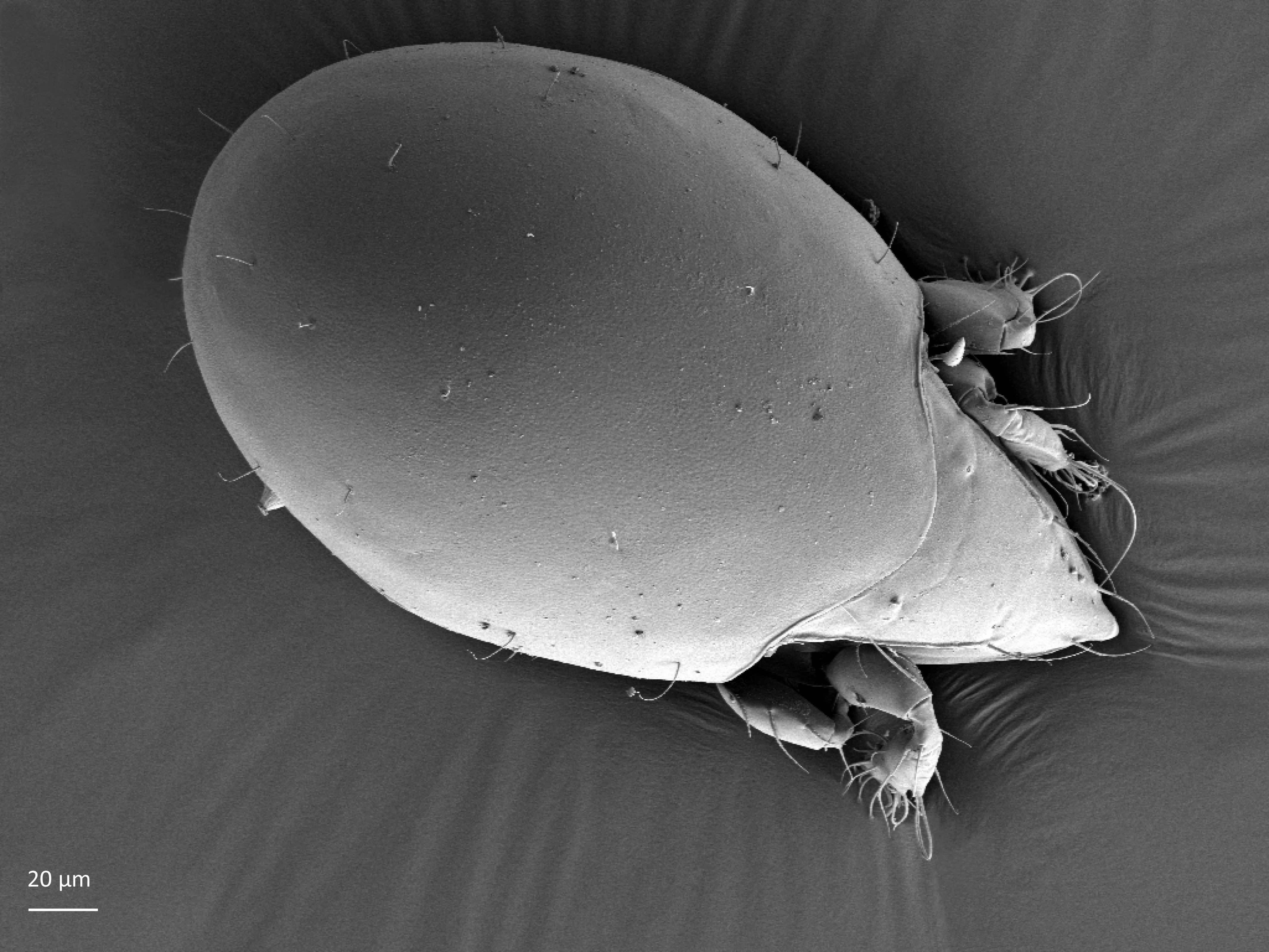Haplozetidae
The family Haplozetidae occurs worldwide except in Antarctica. Species of this family are found both in dry and moist environments. They occur in soil and litter in forests, grasslands, peatlands, and gardens, and in dry grass and in caves.
- Innhold
- Characteristics
- Habitat and ecology
The family Haplozetidae includes 19 genera, 14 subgenera, 255 species and 4 subspecies (Subías 2023).
Characteristics
The adults are small to medium sized (250–650 µm long) and brown. The prodorsum has a pair of narrow lamellae. The notogaster has four pairs of porose area or sacculi and 10 or 13–14 pairs of notogastral setae. The pteromorphs, which are wing-like structures, are usually well developed. They can be movable or not movable. The legs have 1–3 claws (Weigmann 2006, Norton and Behan-Pelletier 2009, Behan-Pelletier and Lindo 2023).
Habitat and ecology
Some Haplozetidae, like Lagenobates lagenulus (Berlese, 1904) described here, are found in raised bogs and pastures. Other species occur in forest litter and soil, in soil of gardens and meadows, in dry grass, and in caves (Weigmann 2006, Behan-Pelletier and Lindo 2023). Feeding habits of some species are known, and they feed on decaying plant material and fungi. The analyses of their gut content revealed presence of fungal hyphae and spores, particles of organic matter, and sometimes the cuticle of small arthropods (Behan-Pelletier and Lindo 2023).
Some Haplozetidae reproduce sexually, and some are parthenogenetic (Maraun et al. 2019), which means that only females are present, and they are produced from unfertilized eggs. The time of the development in four species has been studied under laboratory conditions. At 23–28° C the development from egg to adult lasted 18–150 days (Pfingstl and Schatz 2021).
References
Behan-Pelletier VM and Lindo Z (2023). Oribatid Mites. Biodiversity, Taxonomy and Ecology. CRC Press, 508 pp.
Maraun M, Caruso T, Hense J, Lehmitz L, Mumladze L, Murvanidze M, Nae I, Schulz J, Seniczak A and Scheu S (2019). Parthenogenetic vs. sexual reproduction in oribatid mite communities. Ecology and Evolution 9(12), 7324–7332. doi.org/10.1002/ece3.5303
Norton RA and Behan-Pelletier VM (2009). Suborder Oribatida. In: GW Krantz and DE Walter (eds.). A manual of Acarology, 3rd ed. Texas Tech. University Press Lubbock, 430–564.
Pfingstl T and Schatz H (2021). A survey of lifespans in Oribatida excluding Astigmata (Acari). Zoosymposia 20, 007–027. doi.org/10.11646/zoosymposia.20.1.4
Subías LS (2023). Listado sistemático, sinonímico y biogeográfico de los Ácaros Oribátidos (Acariformes, Oribatida) del mundo (1758−2002). Graellsia 2004, 60 (número extraordinario), 3−305. Updated 2023 – 18 actualization, 540 pp., access December, 2023.
Weigmann G (2006). Hornmilben (Oribatida). Die Tierwelt Deutschlands. 520 pp. Vol. 76, Goecke and Evers, Keltern.
